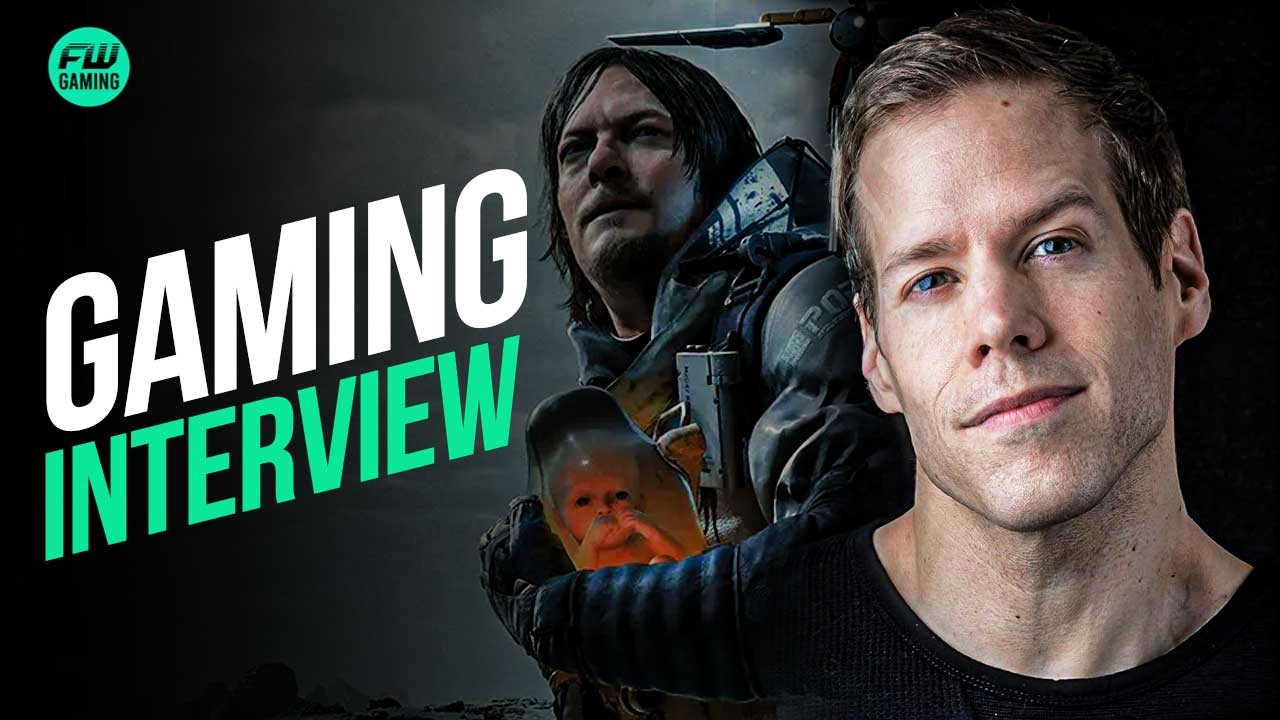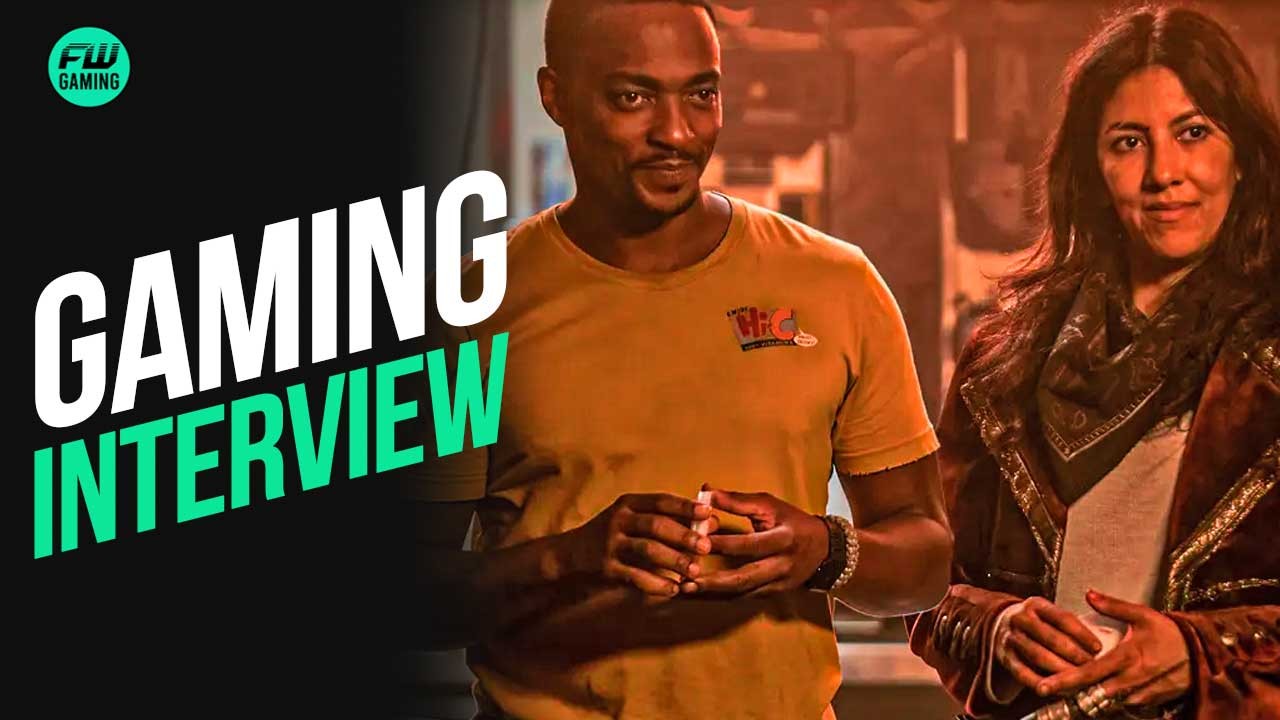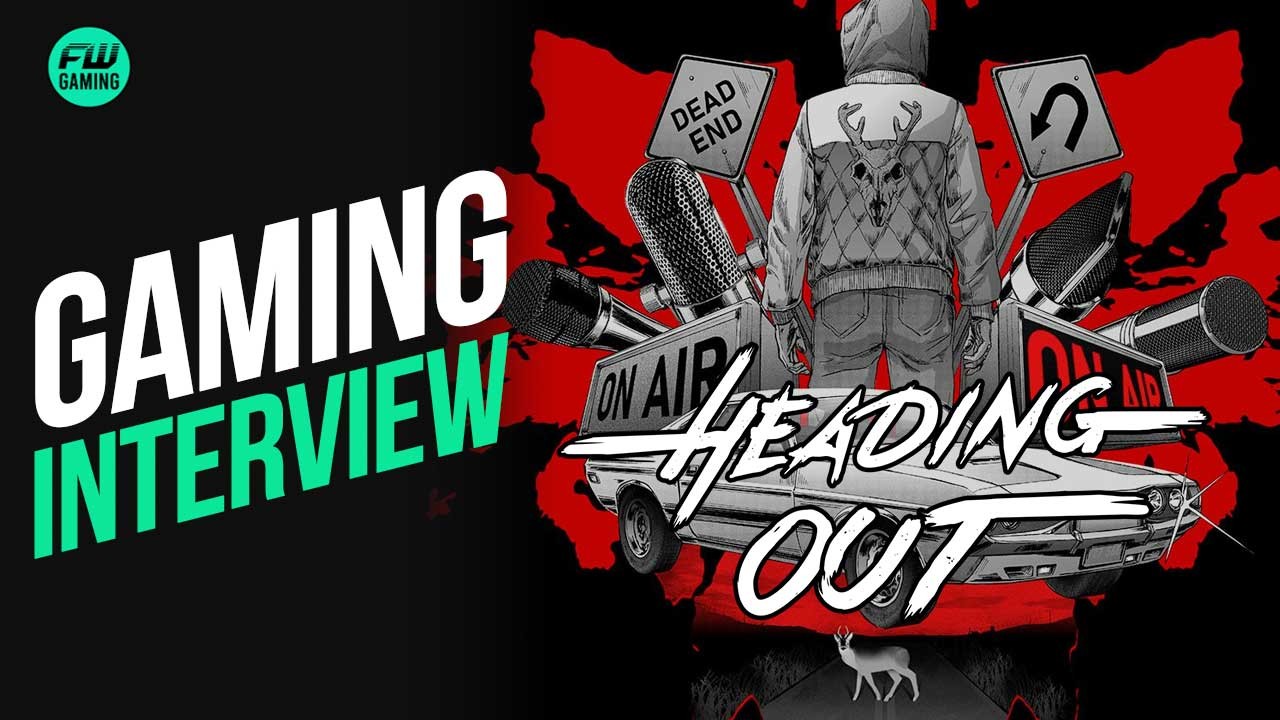Justin Leeper has worked with everyone from Hideo Kojima to pro wrestlers and has been a part of projects like Death Stranding and Wanted: Dead. We were lucky enough to pick the brains of this stuntman, turned mocap artist, turned creative auteur, to learn more about his methods of working and how he has managed to transition his skills from one niche to another.
From stuntman to narrative designer: how Justin Leeper’s career began

FandomWire: In case our readers aren’t aware of your work, could you please tell us a bit about yourself and your career?
Justin Leeper: Hello, Fandomwire readers. I’m Justin Leeper, a guy who’s been lucky enough to do a bunch of stuff that my 12-year-old self might think was cool. You may remember me from such things as Death Stranding, WWE SmackDown vs. Raw’s Road to WrestleMania, Wanted: Dead, and a whole lot of weird Japanese commercials.
FW: Given your career working in video games over the years, I have to assume that you are a gamer. Can you tell us a bit about your gaming history and whether you have a favorite game?
JL: Definitely. I remember the first mind-blowing time I saw Dragon’s Lair in an arcade. I remember playing a dungeon-crawler RPG on our TI-99/4a that loaded via cassette tape. I know the soundtracks of Parappa 1, 2 and Um Jammer Lammy by heart. I platinum’d Elden Ring, which is probably in my all-time top 5. Gaming remains a huge passion to me.
FW: Before being a motion capture artist, you worked as a professional stuntman. Can you please tell us how those roles differ from one another, and which skills you brought from one job over to the other?
Justin Leeper: Because my career in performance started with pro-wrestling, I learned to give full commitment whenever I’m doing something – in part because not doing so could get me hurt. Plus, when you cut your teeth pretend fighting in a singlet, you’re not easily embarrassed.
For motion-capture specifically, I think my physical acting is an asset. Plus, I can play a character of any size, without needing to actually aesthetically look like the character.
FW: Have you ever sustained any serious injuries in your line of work? Is performing motion capture safer than performing on-set stunts?
Justin Leeper: I’ve had my share of nasty hits and a couple concussions, but nothing that took me out for an extended period of time. Usually, on mocap sets, I’m a lot more willing to put my body at risk than the crew are. They’re the ones talking me off the ledge, rather than onto it. But again, when you’ve intentionally fallen off of a warehouse, fear isn’t a factor. Plus, you don’t actually need the brick wall or the attack chopper in mocap; they can be crash pads or simple platforms. In “the volume,” it’s pretty much just the actors.
Transitioning into motion capture
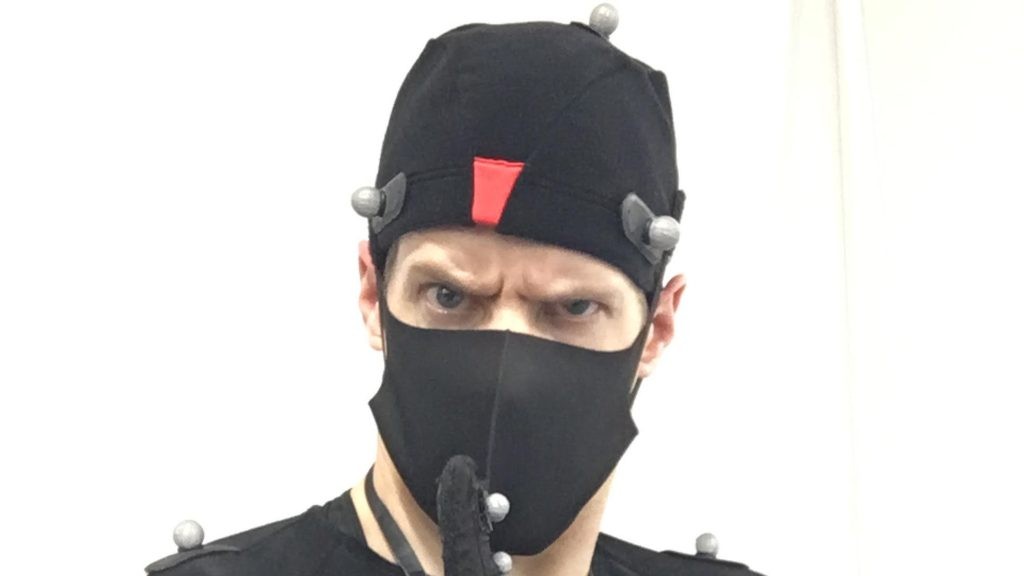
FW: When performing motion capture, you often can’t see what the end result looks like in real time, (apart from a few special cases.) Do you ever find it difficult to visualize the end result when performing? How does this affect your performance if so?
Justin Leeper: There are often animatics or mock-ups for reference. And between takes, we can watch playback – sometimes using rough versions of our in-game models. That’s actually a lot of fun to see. But you’re right that motion-capture is even more reliant on imagination than other forms of acting. And there’s a lot of post-production involved. But it makes seeing the final product that much more exciting!
FW: You have worked on some huge projects over the year’s including Hideo Kojima’s Death Stranding. The recent Connecting Worlds documentary that showcased that game’s development claimed that he is a very hands-on director who is almost omnipresent across the entirety of a project. Did you find this to be the case when working with him?
Justin Leeper: Kojima-san was an incredible director. Yes, he’s hands-on; but that’s because he’s the owner of the vision – a very important job for a creator, especially on big projects. And he’s someone who thinks of everything, which I truly respect. He still trusted us actors to make choices, like approving my idea in Deadman’s final scene of Death Stranding.
FW: Did anyone on set have any clue what the game was about when making Death Stranding other than Hideo?
Justin Leeper: We all had random pieces of the puzzle, if that. How he ties everything together is incredible. Even stuff from early DS trailers makes it into the final product.
FW: Your IMDB credits don’t mention the upcoming sequel of Death Stranding 2: On the Beach. Were you not involved at all in that project?
Justin Leeper: I’m currently living in the UK, which would complicate logistics quite a bit. Nothing to report yet, though with the way Japanese companies are very secretive about things, I couldn’t tell you if I was.
FW: We were lucky enough to interview the incredibly talented Stefanie Joosten last year, who has also worked with Hideo, before the two of you worked on Wanted: Dead together. Do you have a favorite memory from your time working with Stefanie on Wanted: Dead?
Justin Leeper: Stephanie had to remote in every shoot day, as did Sergei (Creative Director and voice of Doc). That’s not an easy task – sitting at a computer, watching these ants on a screen. But she was always cheerful, always attentive. She gave good feedback while also giving us freedom. Her background as a performer definitely was an asset. The team at developer Soleil was on set every day, and they’re a talented group.
Combing physical performance with narrative structure and storytelling
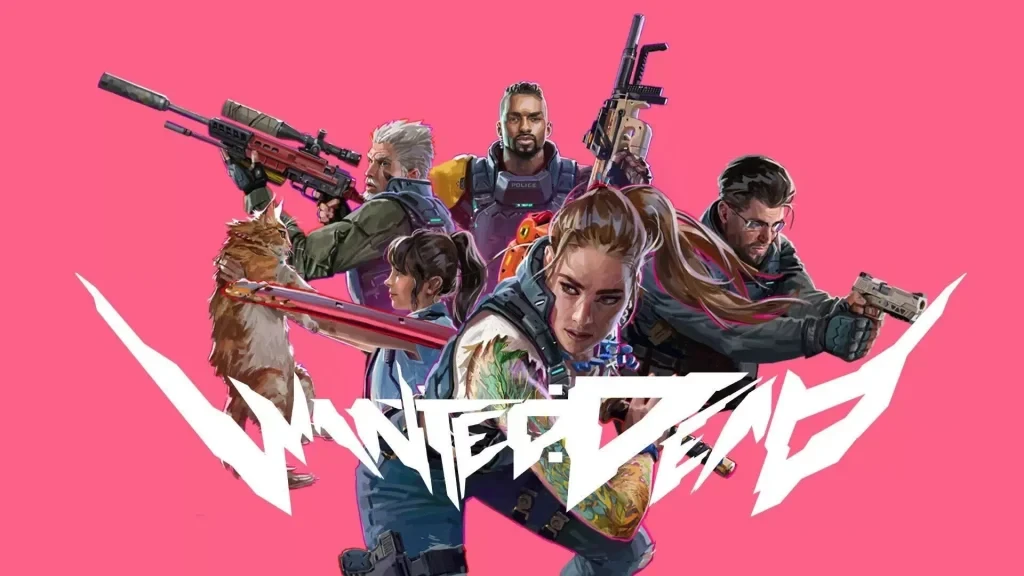
FW: You did the motion capture for Sgt Arnold Herzog in Wanted: Dead, who was voiced by Tony Clark in the English version of the game. Did you find it difficult to match your movements to Tony’s vocal delivery?
Justin Leeper: There is an efficiency that comes from having the vocal track already present for mocap recording. You have rigid timing to adhere to. At the same time, as a performer you want as much “open road” as possible. But first and foremost, I want the people who hired me to be happy with my work; having Tony Clark’s audio there aided in that goal.
FW: Having performed motion capture for iconic villains like Higgs in Death Stranding, as well as doing the stunt co-ordination for multiple WWE games, I’m curious to know how much time you spend researching and studying the movements of someone who you are virtually bringing to life via motion capture. Is this a lengthy process?
Justin Leeper: I certainly try to do my homework. When I auditioned for Higgs, I studied a lot of Mads Mikkelson, because I erroneously thought that was his character. Luckily, I still got the role. Deadman dropped in my lap last-minute, but that time I was certain I was studying the right person!
It’s about embodying your character fully. How do they feel, how would they react? For Wanted Dead’s villain Richter, it felt natural to tuck my hands behind my back. To play Venom in Marvel: Ultimate Alliance 3, I enjoyed the fluid undulation. Sometimes I play multiple characters in a day; that gets a little busy in my mind.
For people who haven’t done acting, memorizing the lines is just step one (but when you’re in a Kojima game, it’s a big step). Once you have them down, you then go to work finding your beats and making it your own. It’s the same thing I say about fight choreography.
FW: With technology improving all the time, what do you think that the future of motion capture looks like?
Justin Leeper: There are now mocap “suits” you can buy where your motions get picked up by a computer. It does a pretty good job without the need for dozens of very pricey cameras and a football field-sized “volume.” This means almost any game maker can use motion-capture for fluid animation and realistic performance with just one Xsens suit. It does get tricky when you have to portray the one hitting and then the one being hit, if you only have one suit. I’ve played multiple characters in many scenes.
On the flip side, capturing face, body, and voice from one actor in one take just makes so much sense – from a time standpoint, from a cost standpoint. Cinematics are by far the most expensive and time-consuming aspect of game development. Anything to shave off one or the other without sacrificing quality will be most welcome.
FW: Finally, what is next for you as a performer? Are there any upcoming projects you are involved in that you can tell us about?
Justin Leeper: I am back in game design full time, working on Transformers Reactivate at Splash Damage. It’s a big project, and I’m Lead Narrative Designer. We’re working hard, so please keep an eye out for it!
But I’m also often “performing” for my followers on social media, so look me up if you want. Not too many Justin Leepers out there, so I’m easy to find.
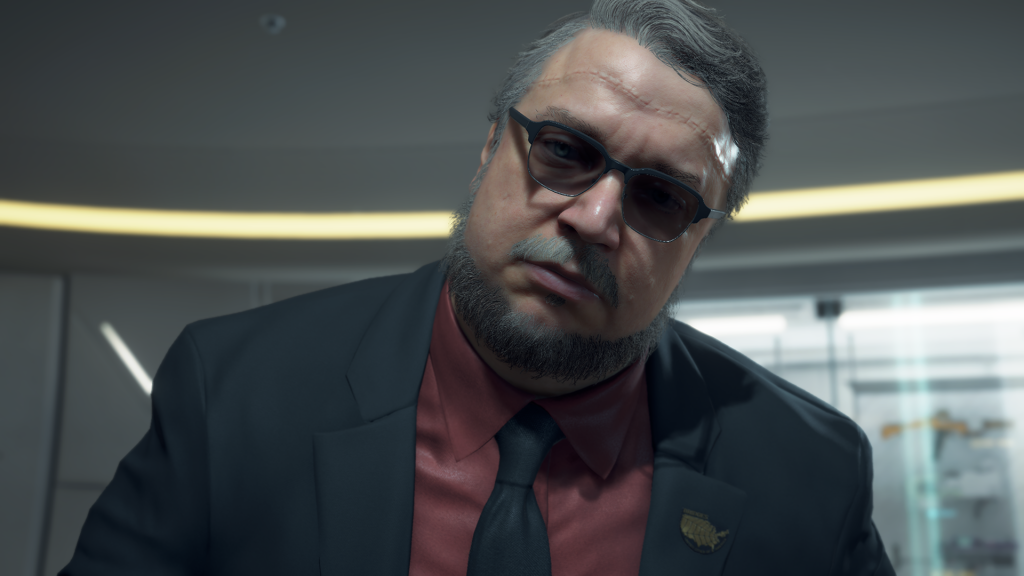
Justin Leeper is clearly a man of many talents, and it was a joy to pick his brain and get a bit of insight into how he thinks as both a performer and a creator. Be sure to keep an eye on FandomWire’s review for Transformers Reactivate, as we are very much looking forward to that title dropping and will definitely be checking it out when it launches.

